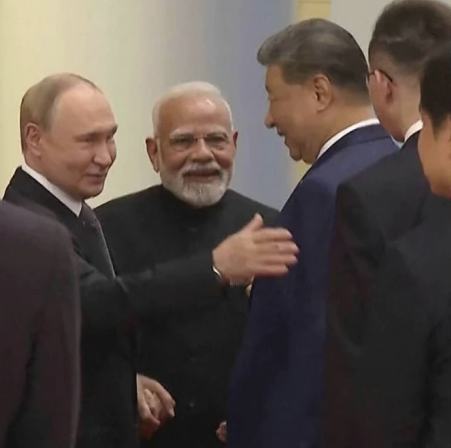China's Multipolar World
- andrewsingerchina
- Sep 5
- 2 min read
Updated: Sep 9
The message from China could not have been clearer this week. The People's Republic has re-emerged as a world leader with a goal of spearheading a re-oriented international political and economic system more favorable than the Western liberal order that has dominated for almost a century.
The Shanghai Cooperation Organization Summit in Tianjin and the military parade in Beijing commemorating the 80th anniversary of the end of World War II in Asia showcased China's power and influence. Western representation was notable by its absence. America’s involvement in and support of China during the War were downplayed. The key roles of China and Russia in the War were emphasized. In all of this, China is neither shy nor subtle in proclaiming her presence.

Picture the optics. Xi, Modi, and Putin stood holding hands in Tianjin at a conference of a group whose membership represents more than 40% of the world's population. Two days later, Xi, Putin, Kim, and other national leaders took center stage in the heart of Beijing reviewing a massive military parade. This was not symbolic theater for its own sake. It was a curtain rising on a new play with a new audience.
Out of an energized Shanghai Cooperation Organization came new commitments on AI partnerships, a new development bank, and fresh rounds of foreign aid, both grants and loans. China also showcased its advanced military capabilities. Hypersonic weapons. Nuclear missiles. Air defense lasers. Drones. Robotics. This was a declaration and a broader message.

China, Russia, and North Korea are strengthening ties once again. Nearly a century ago, the Soviet Union provided the blueprint for the founding of the Chinese Communist Party. The relationship evolved, from deep cooperation to a bitter split in the 1960s. Now, they are finding common ground again, united by a shared desire to challenge the existing order. China has been North Korea’s political and economic lifeline for decades. Despite friction over time and North Korea’s growing partnership with Russia on Ukraine, China remains central to the government's survival.
As for India, the two countries have clashed militarily and politically numerous times since the 1960s, most recently just a few years ago, yet this week Modi stood alongside Xi in Beijing. Shifting alliances are redefining old rivalries and forging new arrangements.
This is not a power struggle within the Western-led global order. It is the creation of an alternative offering much of the world a new paradigm. China, and her allies, are building a parallel system of influence, wealth, and governance. The question is no longer whether a multipolar world will emerge. That has already begun. The questions for the United States and other Western countries are whether we can accept this new reality and what our roles in it will be.





Comments